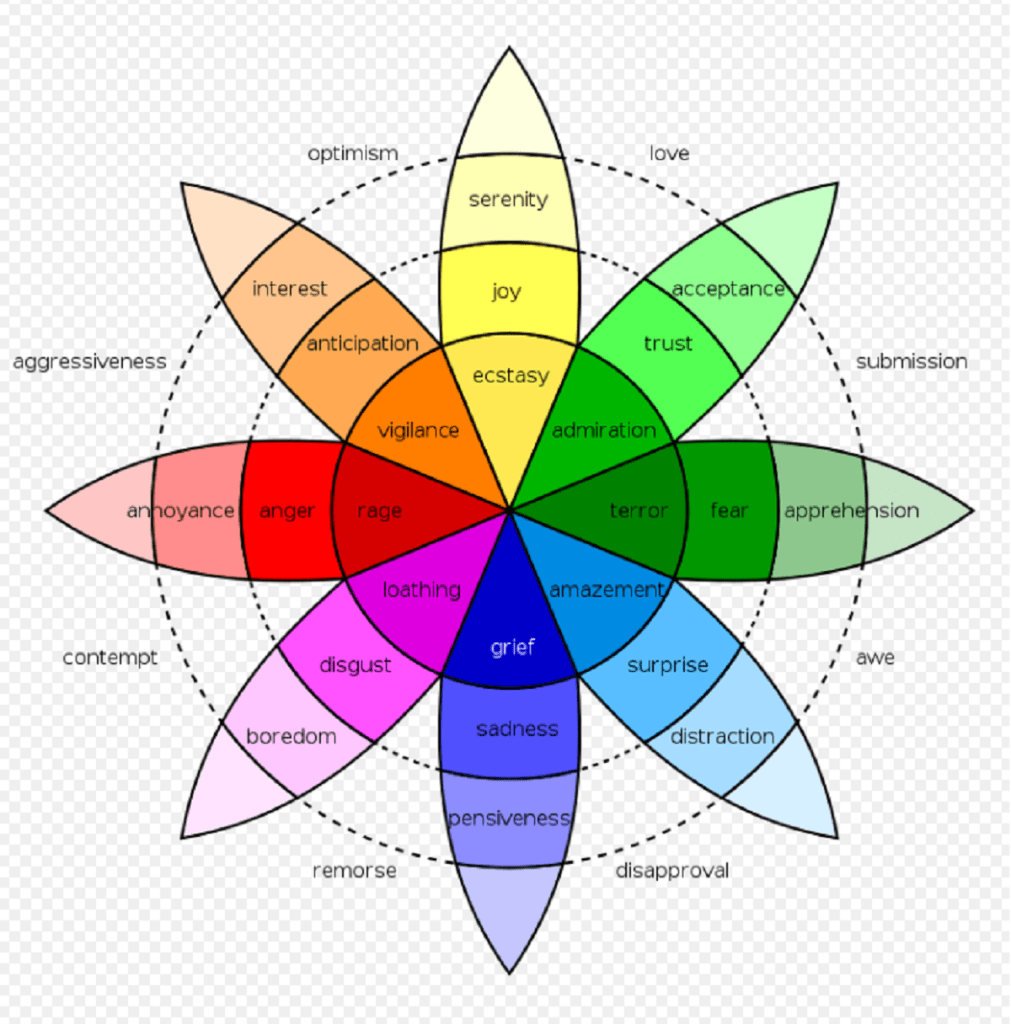
Read other articles on copywriting here.
Emotional copywriting is a powerful tool to persuade your prospects. The truth about emotional copywriting is that emotions play a significant role in how people decide. But how emotional copy can persuade your prospects? First, in your emotional copywriting, you must provoke the prospects’ emotions that matter to persuade them to do what you intend them to do.
Robert Plutchik’s “wheel of emotions”
The theory of emotion proposed by Robert Plutchik identified “eight primary emotions—anger, fear, sadness, disgust, surprise, anticipation, trust, and joy. Plutchik argues for the primacy of these emotions by showing each to be the trigger of behaviour with high survival value, such as the way fear inspires the fight-or-flight response.” He “also created a wheel of emotions to illustrate different emotions.”

Why use emotional copywriting
A common belief is that reasons to buy matter in purchase decisions. Another belief is that emotion drives the action that is rationalised by reason to justify that action. Whatever it be, emotions play the single top factor in making a decision.
The Institute of Practitioners in Advertising, UK, made neuromarketing studies on the influence of emotional campaigns and campaigns based on emotions and rational reasoning. This study showed purely emotional content campaigns made twice the impact (31% vs. 16%) compared to rational content-only campaigns. Choice of Color is another emotional factor associated with about 85% of customers’ decisions on buying a product.
The copy needs to stimulate the prospect’s emotional reaction. As a writer, establish an emotional bond with the customer first, later with the product. Your copy then becomes interesting since you are identifying with the customer.
As a customer, think about what you see in the product, why would you buy it, and what emotional factors are involved in your buying decision. Compare the product with its competitors and find out what is the uniqueness of this product. You can then write a better emotional copy.
Here is a list of emotions, though not exhaustive, and a sample of trigger words. You can find a way how to adapt any of these emotions to stimulate the desired effect in a copy. Emotional language invokes emotional feelings in the readers/listeners.

Curiosity is the one emotion that engages all
Every one of us has curiosity, and this is the primary motivator of our life. It is your gift as a copywriter. Curiosity works as a double-edged sword and its power can drive your storytelling. Try to know how and why.
With curiosity aroused, readers would be desperate to know what and how they will benefit from what you are talking about. To have a product that makes life easier for the reader is one aspect. And making him interested enough in reading about it and purchasing it is quite another aspect. The simplest and most effective way to do this is to hold back a portion of the pitch to a later part of the copy.
Identifying various emotions
Don’t just think the reader is swayed by one emotion. He may feel mixed emotions or feelings in his buying decision. So, it is important also to identify what are all emotions the reader feels to buying a product for which you write the copy. You can make some exercise. Think as if you are a customer for that product, and whether you feel one or mixed feelings towards it. You will surely identify one or mixed feelings or a dominant feeling in your reader for the product. And how does it satisfy his needs? It helps prepare your draft of the customer sketch with the stuff that provokes the feelings of the reader.
Provoke the curiosity of your reader with your opening statement by hinting at what he can miss. If you feel not satisfied with your draft, redo it till you feel satisfied with the stuff you wrote.
Using everyday language to communicate
Using everyday language to communicate with the reader is the best way to save your time and efforts. It can make an easy emotional connection with the reader. Use words whose meaning is clear with no ambiguous sentences. Some simple phrases can trigger many of our emotions, ranging from anxiousness to admiration. For example, ‘I’m concerned for your safety’ conveys anxiety. ‘You are intelligent’ conveys appreciation. Everyone connects to such phrases.
Create an emotional map of the consequences of buying or not buying with answers to such questions.
What are the advantages of purchasing this product? What impact will your prospect’s purchase have on their life? When your prospect’s family, friends, and colleagues find out, how will they react? What happens if they purchase from you? What isn’t going to happen?
You can start to realise how your prospects will perceive the options you are offering them. Once you realise this, you can start thinking about how to persuade them to decide what you think to make by them.
Determine the relevant set of feelings that arise when your customers consider products similar to yours.